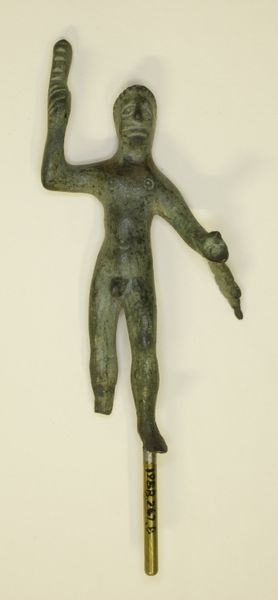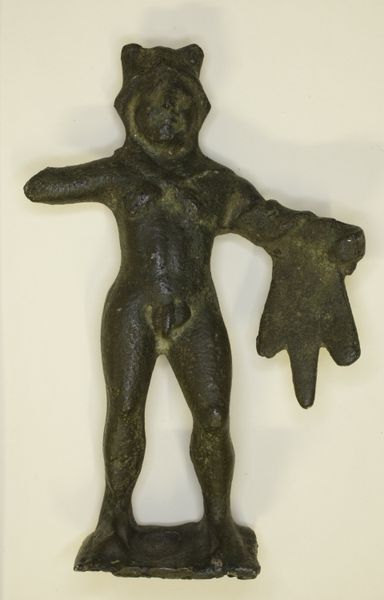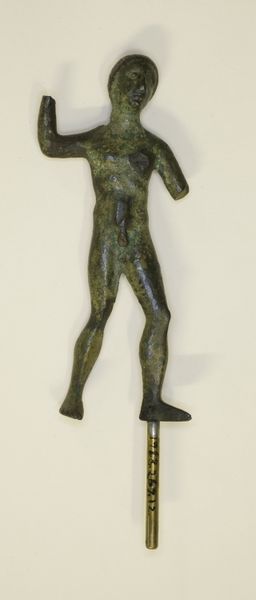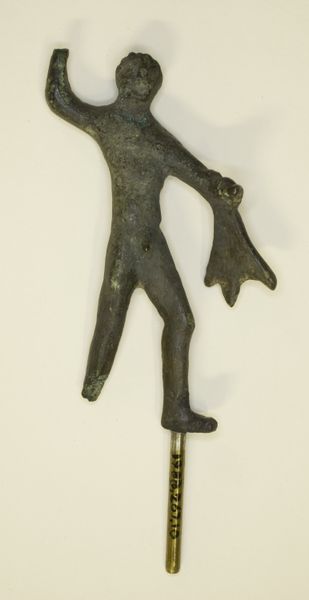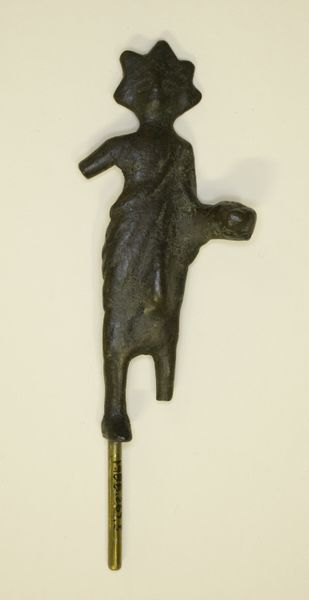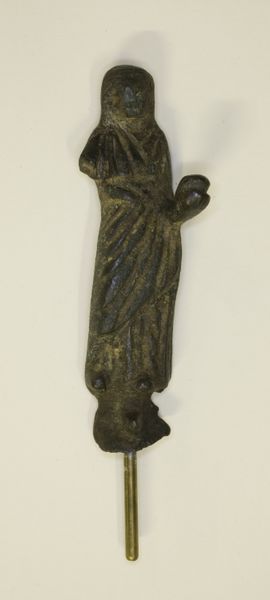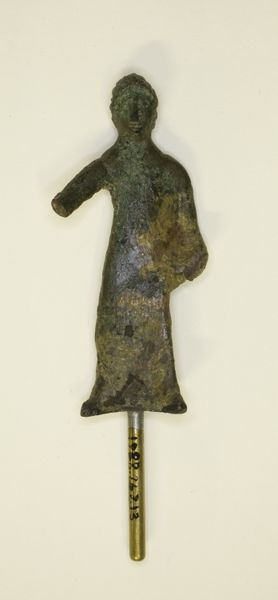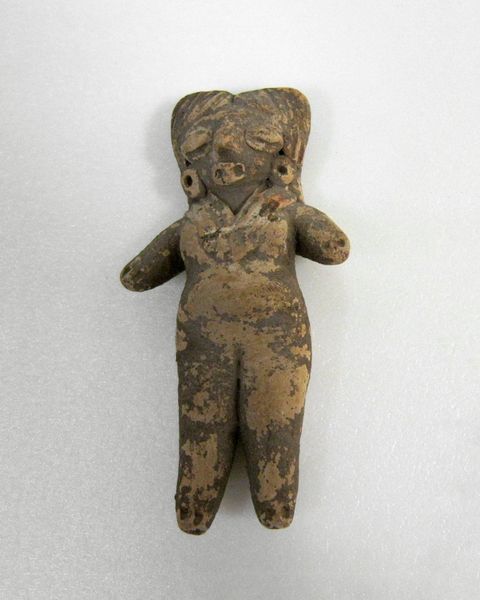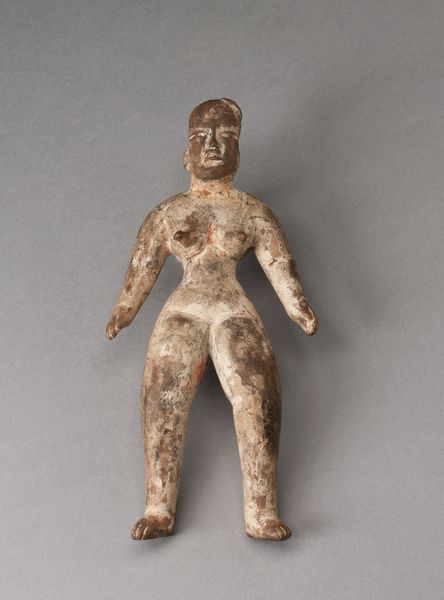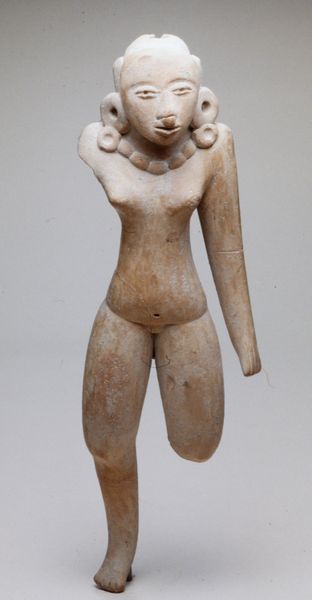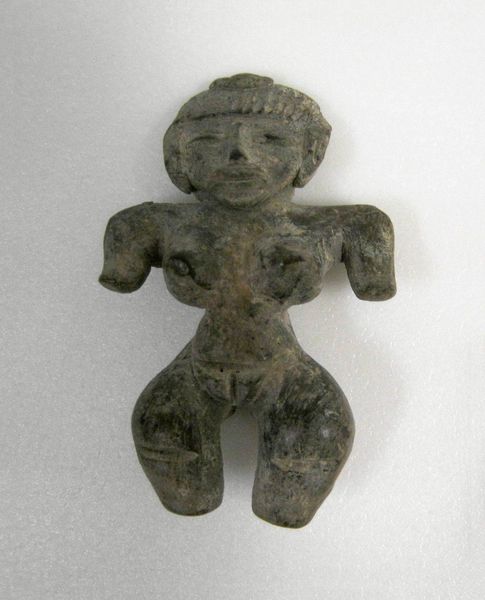
bronze, sculpture
#
sculpture
#
greek-and-roman-art
#
bronze
#
figuration
#
ancient-mediterranean
#
sculpture
Dimensions: 9.5 × 6.5 × 1.5 cm (3 6/8 × 2 1/2 × 1/2 in.)
Copyright: Public Domain
Curator: This is a bronze statuette of Herakles, dating back to around the 4th century BCE. It’s currently held in the collection of The Art Institute of Chicago. Editor: It’s striking! He appears so worn, quite literally. I'm immediately drawn to the texture of the bronze, the way it has corroded over time, giving him this deep, almost mossy, green patina. There’s something quite visceral about its state. Curator: Yes, the bronze certainly tells a story. Herakles, of course, embodies strength, courage, and perseverance in the face of immense trials. How does the aging process impact his symbolism? Editor: The degradation of the material ironically underscores his triumph over time. Despite its damages—notice the missing hand and surface erosion—the object persists. To consider the physical act of creating a bronze statue, and the community it must've taken is an enormous undertaking; bronze casting required significant technical skill and social organization, shaping our understanding of class and labor. Curator: Absolutely. Herakles' imagery shifted over time. Bronze as a material holds specific cultural weight—a valued material in antiquity due to its durability and malleability, suggesting value, while its ultimate decay speaks to mutability. Even lacking original attributes, his widespread recognition remains. Editor: The use of bronze wasn't merely a practical choice. The luster it would have originally possessed suggests luxury, but that was only for the elite few who could obtain the material. Its status now only signals decay from its material condition. We now contend with time in an ever changing light! Curator: Indeed. He is an artifact with which we contemplate both the eternal and the ephemeral. Thanks for illuminating this bronze rendering through the lens of its composition. Editor: It’s been a pleasure to engage in these dialogues, where historical contexts and artistic interventions intertwine.
Comments
No comments
Be the first to comment and join the conversation on the ultimate creative platform.
